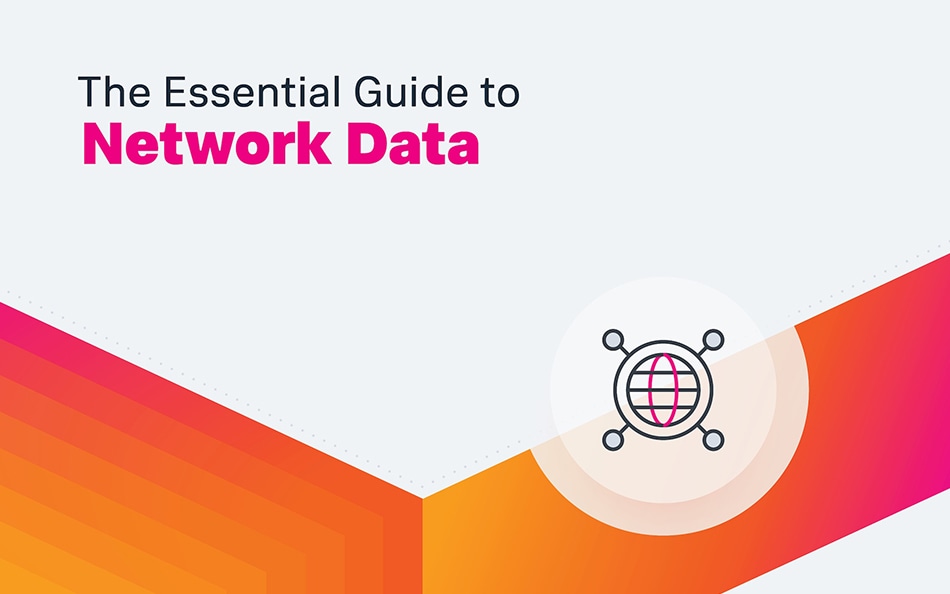Network Topology: The Complete Guide

It's no secret that cyber incidents have spiked significantly since COVID. The total cost of these attacks stood at 4.45 million USD in 2023. So, it's hard to overstate the importance of cybersecurity practices that organizations should follow to protect their users from data compromises.
Networks are vital in cyber security because they serve as a medium to fight potential disruptions and make operations seamless. And a well-structured network topology ensures seamless communication and a strong infrastructure.
In this article, you'll learn about:
Network topology types
Their importance
The role they play in cyber security
What is a network topology?
In IT networking, network topology is the arrangement of two or more nodes (devices or links) to establish communication among all the nodes. Every organization relies on different topologies to structure the network of their building.
Establishing a network topology:
Improves communication between devices.
Help networks function properly.
Makes fault detection easier.
Reduces cabling cost.
Though network topology identifies the critical points of failure within networks, organizations must develop contingency plans to reduce the number of disruptions and maintain essential operations.
However, since they usually have restricted budgets, an effective strategy for resource allocation must exist to improve their network resilience and responsiveness.
Two categories: Logical and physical topologies
The network topology is divided into two categories—logical and physical.
Logical topology involves mapping how devices should communicate within the network. It decides how data will flow between devices and which devices can communicate with each other — similar to planning the best traffic routes with no disruptions.
Physical topology involves planning the physical layout of a network. It focuses on where to position different devices, such as routers, switches, and cables, for better connectivity.
(Related reading: IT infrastructure & how network traffic works.)
Types of network topology
Different ways exist to connect devices in a network system. Let's look at the main types of network topology:
Bus topology
Each device in this topology connects to a single wire so data can move in one direction. However, one-way communication in bus topology is the biggest hurdle in collaborative tasks and real-time interactions. If multiple hosts send data at a time, data either gets lost or delayed.
Since this network relies on a shared channel, the failure of one device leads to system downtime. So, bus topology is not ideal for every scenario.
Ring topology
In a ring topology, each host is connected to two other hosts in a loop. Intermediate hosts or vector hosts facilitate the communication between distant hosts. Each host:
Receives the message.
Processes the message, if necessary.
Forwards it to the next host.
Unlike termination points in bus topology, messages in ring topology can circulate freely without encountering dead ends.
Star topology
In a star topology, all systems are connected to a single central hub — creating a star-like structure. This hub is the central point of the network that facilitates communication between the devices.
However, the challenge with this network topology is that devices can't interact with each other. The failure of the hub disrupts communication since they communicate through it.
Mesh topology
Mesh topology allows devices to establish connections directly with any other device in the network. If one device fails, it doesn't disrupt the entire network.
The mesh topology surpasses the ring and star topology due to its scalability advantage. You can expand the network by adding new devices.
Hybrid topology
Big organizations such as banks need personalized topology networks based on their needs. That is where hybrid topology helps. It mainly integrates the features of the star and ring networks.
With a hybrid topology, you can combine the features of several topologies to build a personalized one.
Comparing the different types of network topologies
Still confused about choosing the right topology? Let's have a look at the table for a side-by-side comparison:
Topology networks | Advantages | Disadvantages |
Bus topology | Reliable and easy to use. Cost-efficient because only one wire is used. | Network downtime and congestion. Unreliable for large networks. |
Ring topology | Failure of one device doesn't affect other devices. Easy to replace and remove devices. | Costly as it involves installing multiple devices Operation of the whole network depends on the hub. |
Star topology | High performance for smaller or similarly loaded networks. Easily extendable without signal loss. | Requires high maintenance. Difficult to identify faults. |
Mesh topology | Diagnoses network problems easily. Every device can communicate with other devices, reducing network traffic. | Requires a large amount of cables. Has latency issues. |
Hybrid topology | You can modify it according to needs. Has a reliability advantage. | Complex design. Requires a lot of installation cables. |
Identifying the right network topology: Best practices
Consider the following factors if you want to choose the right topology:
Seek better communication: The smooth communication between devices improves the overall performance of a system. So, you need a strong and efficient communication system to ensure data flows smoothly.
Establish cost-efficient networks: 31% of organizations don’t invest enough resources to address cyber risks. They aim to build networks without spending much.

However, complex networks can cost a lot because they require several links or nodes. So, instead of blindly investing or not investing, you should structure a network topology that runs smoothly without even breaking the bank.
Ensure resilience and scalability: Systems deal with human errors, bugs, and failures, which can cause data loss and compromise. To avoid that, you should ensure your network is resilient and scalable. A resilient and scalable network is simple and comprises independent devices.
Build a less complex network: Complex systems are challenging and less budget-friendly to manage. That’s why build a less complex network that is easy to fix and can adapt to changes.
(Learn more about network monitoring & network configuration.)
Importance of network topology layout
Have you ever wondered why organizations need a network topology? Here’s why:
The backbone of reliable networks
Well-structured communication networks make networks more reliable, but it depends on which topological layout they use. So, when you design a network topology, you should make it reliable and cost-efficient.
Ensure on-time data delivery
Every second matters when it comes to securing system data. Delays in data transmission can cause outages and big losses for companies. Therefore, you must ensure one-time data delivery, which is only possible when you have a fault-free layout.
(Related reading: data streaming & real-time data.)
Proactive planning
The proactive approach keeps your system prepared for all possible failures. By taking a proactive approach to network layouts, organizations can prepare for potential disruptions. They do this by analyzing network topologies.
Have you ever noticed how public transport always has robust infrastructure and smooth system operations? This is because it takes a proactive approach to analyzing different routes and associated disruptions beforehand, which prepares it for any potential security risks.
Ensure resilience
A resilient network can handle emergencies within a limited time and money. To do that, you must determine what makes your network strong or weak. Ensure your network consists of multiple devices so that the failure of one device does not disrupt the whole setup.
Building less complex networks makes device replacement and changes easier. You should keep validating and testing your network to identify any potential disruptions.
(Related reading: business continuity planning vs. business resilience.)
Network recoverability
Network recoverability refers to the network’s ability to recover from a failure. Structuring a network that can recover from threats is essential because prolonged recovery can put business integrity at risk.
Greedy is one of the recovery approaches that can fix damaged connections. With this approach, you prioritize recovering nodes that can improve performance.
Network topology and cyber security
What sets a good network structure apart from a bad network structure is its ability to fight data breaches. Every organization — from banks and corporate buildings to power factories and supply chains — must structure its networks to be less vulnerable to security threats.
They should block certain types of network messages to avoid attacks.
They must store information in a place that attackers can't manipulate.
They must encrypt data exchanged between devices.
A well-designed network topology identifies the weak points that are easily detrimental.
For example, smart meters are constantly at risk of data compromise. Breaches like DoS and man in the middle (MiM) can affect their ability to monitor and transmit usage. Attackers can inject fake entries and disrupt communication.
The only way to protect smart meters from these attacks is to structure a proper network by implementing packet filtering and intrusion prevention functions.
(Learn about cyber hygiene best practices.)
Design secure network topologies
The network topology is the backbone of any organization. You can combine different topologies to create a personalized network structure because a robust network system minimizes the chances of security attacks and improves communication.
See an error or have a suggestion? Please let us know by emailing splunkblogs@cisco.com.
This posting does not necessarily represent Splunk's position, strategies or opinion.
Related Articles
About Splunk
The world’s leading organizations rely on Splunk, a Cisco company, to continuously strengthen digital resilience with our unified security and observability platform, powered by industry-leading AI.
Our customers trust Splunk’s award-winning security and observability solutions to secure and improve the reliability of their complex digital environments, at any scale.




